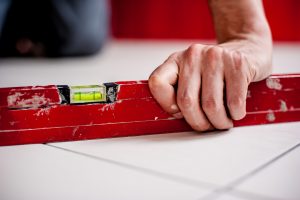Measuring non-quality: an expertise of the FILAB laboratory
Non-quality is a recurring theme in the daily life of manufacturers. However, few manage to measure its real impact on their business and define effective corrective actions. FILAB can help you make non-quality a competitive issue for your company.
What is non-quality?

In the industry, non-quality refers to all the non-conformities of a product, a part or a material that does not comply with the customer’s specifications: visual defects, dosage problems in the composition of a product, underestimated mechanical performance, etc.
These non-conformities generate significant costs for the company, during the production process (scrap rates, additional work hours, excess raw materials…) but also downstream of the sale (customer returns, transportation costs, temporary halt in marketing…).
According to a study conducted in 2017 by AFNOR among 816 French manufacturers, the costs associated with non-quality would represent on average more than 5% of sales, which is far from making it a negligible lever in a profitability strategy. Before undertaking improvement initiatives, it is necessary to identify the sources of dysfunction by setting up reliable and effective indicators.
Why is it important to measure non-quality?
Measuring the non-quality of a production is above all recognizing its degree of flaws. But this is easier said than done! Still according to the AFNOR study, 20% of the companies questioned admit that they do not know how to measure their non-quality costs.
What are the steps to follow?
① Define relevant indicators. Using automated computer tools, the preliminary objective is to study the theoretical path of a part or product and associate various performance indicators: time, costs, labor, deliverability rate…
② Analyze the data collected on a regular basis. They will allow to identify the sources and causes of anomalies and to define a corrective action plan: optimize tools, review suppliers’ specifications, improve workstation ergonomics…
③ Set cost or loss reduction targets over a year.
A non-quality cost management strategy will help minimize the differences between the forecasted and actual costs of a production line. In this approach, the support of an external service provider ensures a fresh and neutral vision of your processes and brings you a wider industrial experience.
How does FILAB support you in your non-quality cost management strategy?

Through site audits, FILAB makes available the multi-sector knowledge of its experts to help you optimize your processes. From the reception of raw materials to the sale of products, we look for malfunctions that impact your costs, your lead times and the quality of your products.
Depending on the results obtained, FILAB offers you personalized support at several GO/NO GO stages, such as
Our personalized accompaniments
Help in defining more demanding specifications on quality criteria
Automation of certain processes
Proposal for training to support teams in new quality approaches
Modification of tool settings to reduce the risk of defects
Development of analytical methods or realization of analysis kit to evaluate more quickly the quality of materials or products.
The control of your process and the perfect knowledge of your materials are essential criteria to reduce your non-quality costs. With FILAB, you will have direct technical contacts and your projects will be carried out in complete confidentiality.
An example of a problem solved...
A few months ago, a large company in the luxury goods sector sought the expertise of our materials department to reduce costs related to non-quality. The company was indeed affected by high scrap rates that were impacting its delivery times, forcing it to overestimate raw material stocks, and requiring additional manpower.
Through several site audits and numerous discussions with the customer, FILAB studied the theoretical path of the various parts that made up the product in order to identify the causes of the anomalies. The use of the defect library allowed FILAB to characterize the defects in the production process that were causing the product to fail, and to quickly implement corrective actions:
Our actions
Definition of more demanding specifications for raw materials, based on quality criteria
Modification of the parameterization of certain machines (temperature, cutting...) to reduce the risks of failures
Training of the personnel to these new processes
Implementation of internal quality controls upon receipt of raw materials
Automation of certain operations to reduce production gaps
These actions have enabled us to reduce scrap rates from 10 to 2% in less than a year, and thus to better plan production. The investment costs related to FILAB’s services were also quickly amortized.
Because measuring and reducing non-quality is at the heart of our business, trust us!






